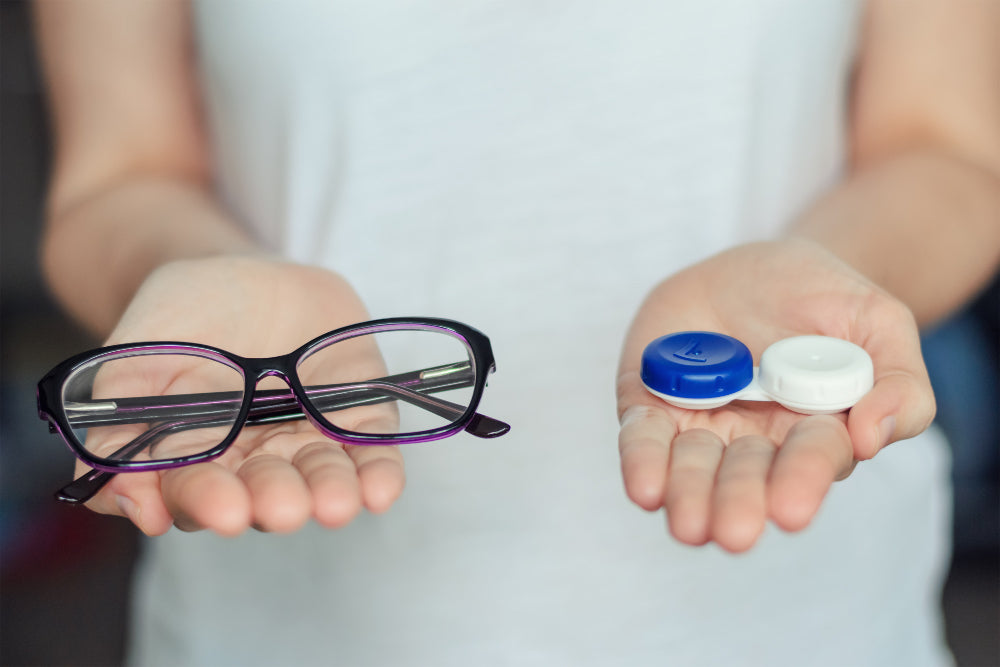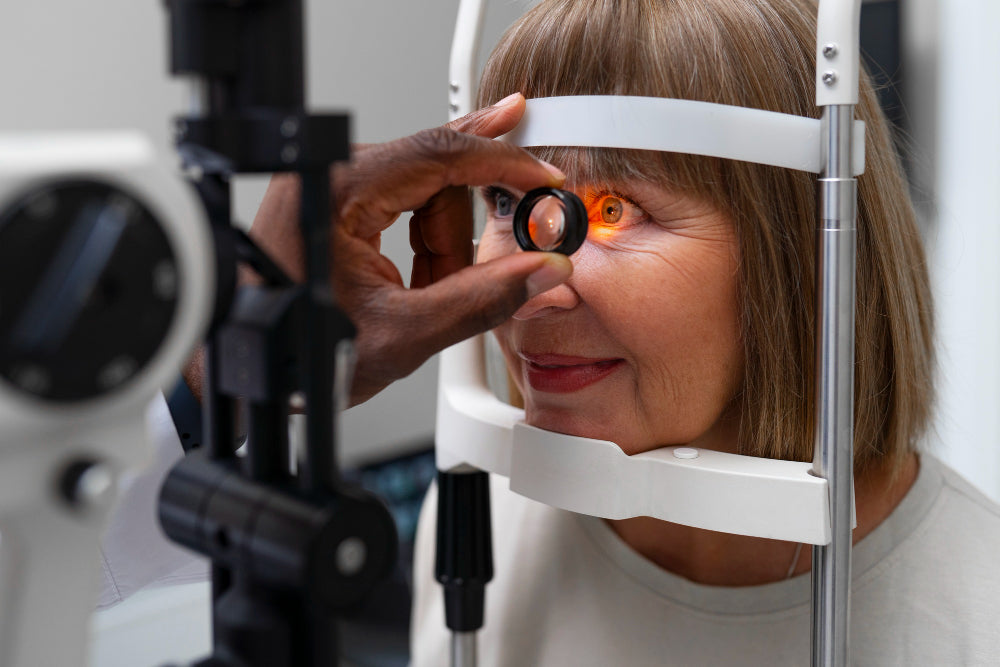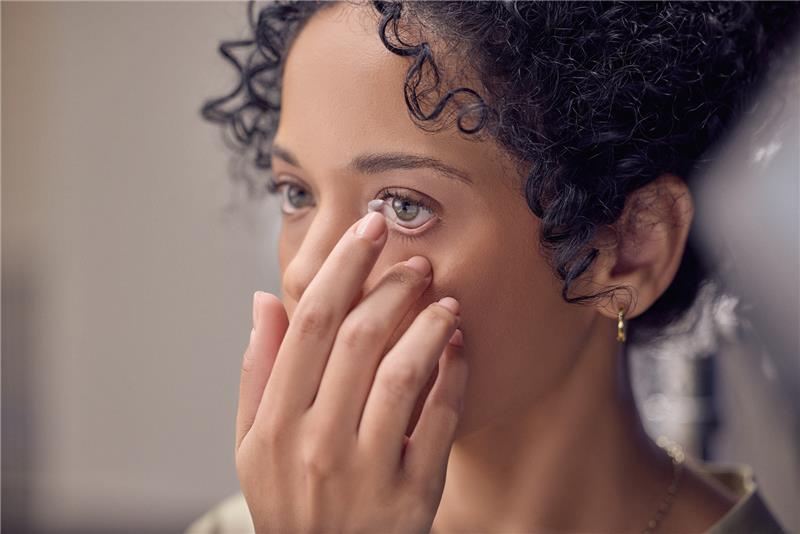If you've ever worn glasses and contact lenses, you might have wondered, "Are glasses and contact prescriptions the same?"
No, glasses and contact prescriptions are not the same. Your optometrist provides separate prescriptions for each because glasses and contact lenses have different requirements. While both aim to correct your vision, each prescription is specifically designed for the type of lens being used.
In this comprehensive analysis, we will explore the intricacies of these prescriptions, explain the difference between contact and glasses prescriptions, and underscore the importance of obtaining the correct one for your unique visual needs.
The Foundation of Vision Correction
To appreciate the differences between glasses and contact lens prescriptions, it’s imperative first to grasp the nature of visual errors. These errors occur when the eye does not bend light correctly, leading to blurred vision.
The most prevalent visual errors include:
- Myopia (Nearsightedness): A condition where nearby objects are apparent, but distant objects appear blurred. Nearsighted people experience eye strain when viewing off in the distance, particularly when driving.
- Hyperopia (Farsightedness): Difficulty focusing on nearby objects, and sometimes distant objects depending on the patient’s age and amount of farsightedness. Hyperopia is often accompanied by eye strain, particularly noticeable with close work.
- Astigmatism: Astigmatism is a visual impairment that occurs when the
- cornea or lens has an abnormal shape, causing images to appear blurred or distorted. Astigmats experience eyestrain with both distance and near viewing. Astigmatism can occur alongside nearsightedness or farsightedness.
- Presbyopia: An age-related vision issue that makes it difficult to see objects up close when viewing through best distance correction, most commonly developing in people over the age of 40. When this occurs in nearsighted people, they can remove their glasses to see up close.
Understanding these visual errors and how they function is critical to understanding how they dictate the specific requirements for glasses and contact lenses.
Examining the Prescription Components

Glasses Prescription
A glasses prescription is a detailed document that provides essential information for crafting corrective spectacle lenses. It typically contains the following elements:
- Sphere (SPH): This value indicates the lens power required to correct nearsightedness or farsightedness, measured in diopters (D). A negative value signifies myopia, while a positive value denotes hyperopia.
- Cylinder (CYL): This measurement addresses astigmatism, specifying the degree of lens power needed to correct this condition. It also includes a corresponding axis value, which indicates the orientation of the astigmatism correction, expressed in degrees.
- Add: For individuals requiring multifocal lenses, such as bifocals or progressives, the “Add” value indicates the additional magnifying power needed for near-vision tasks.
Contact Lens Prescription
However, a contact lens prescription encompasses additional parameters that account for the unique characteristics of contact lenses:
- Base Curve (BC): This measurement reflects the curvature of the contact lens, which must align with the curvature of your cornea to ensure a proper fit.
- Diameter (DIA): This value indicates the overall size of the contact lens, influencing its positioning on the eye.
- Power (PWR): Similar to the sphere in glasses prescriptions, this value represents the optical power needed to correct vision, but it is adjusted for the lens's proximity to the eye.
Key Distinctions Between Glasses and Contacts

Can you use a contact prescription for glasses? The answer is a resounding no. Here are some critical differences to consider:
Vertex Distance
Glasses are positioned at a certain distance from the eyes, usually 12-14 mm, which affects their effective power. Contact lenses, however, rest directly on the cornea, requiring a different power calculation.
Magnification Effects
Glasses, while helpful for vision correction, can slightly magnify or shrink objects depending on their distance from the eye. However, contemporary lens designs are engineered to reduce these distortions to a minimum.
Although contact lenses provide a more natural visual experience by moving with the eye, they can also alter perceived size, particularly for higher prescriptions. As a result, the difference between the two may not be as pronounced as it might seem.
Field of View
Contacts offer a broader visual field without peripheral distortion even in high prescriptions. Modern lens designs in glasses and proper fitting can minimize peripheral distortion, even in high prescriptions. As a result, the difference in visual experience may be less significant for all users.
Tear Film Interaction
The tear film between the contact lens and the cornea can influence the lens's visual power. This necessitates specific adjustments in the contact lens prescription that do not apply to glasses.
The Importance of Distinct Prescriptions
Understanding why contact prescriptions are different from glasses prescriptions is vital for several reasons:
Clarity of Vision: Using the incorrect prescription can reduce visual acuity. Wearing contact lenses with a prescription intended for glasses may not bring desired results in visual clarity.
While the severity of these effects can vary depending on the specific prescription differences, it's generally recommended to use contact lenses with a prescription tailored to them for optimal vision and eye comfort.
Eye Health Risks: Wearing improperly fitted contact lenses can lead to discomfort, redness, and serious complications such as corneal ulcers or infections. A precise contact lens fitting is essential for maintaining eye health.
Comfort and Wearability: The right prescription is essential for ensuring your contact lenses fit properly and stay comfortable all day. Ill-fitting contact lenses can lead to dryness, irritation, even corneal abrasions. For those experiencing dryness or discomfort, a product like OPTASE Dry Eye Spray can relieve and help maintain comfort when wearing contacts.
The Role of Eye Examinations in Determining Accurate Prescriptions
To achieve the best vision correction, eye care professionals must conduct comprehensive exams to determine the correct prescription. Here’s what typically happens during an eye exam:
- Vision Problems Testing: This involves the familiar "Which is better, one or two?" test, which uses a phoropter to measure vision problems and determine the ideal lens power for both glasses and contacts. Understand how comprehensive eye exams include this essential step in eye care.
- Corneal Curvature and Surface Mapping: These tests measure the shape of the cornea, which is critical for contact lens fitting. Understanding the cornea’s curvature ensures that contacts fit properly and provide stable vision.
- Pupil and Iris Measurement: Contacts must fit comfortably within the eye’s natural dimensions. Accurate measurements of pupil size and iris diameter help ensure the lens does not interfere with vision.
- Tear Film Evaluation: A healthy tear film is essential for comfortable contact lens wear, particularly for dry eye patients. An evaluation can determine if additional treatments or special lens materials are necessary.
Making an Informed Decision: Glasses or Contacts?
When deciding between glasses and contacts, several factors must be considered:
- Lifestyle Considerations: Contacts might be more suitable for those who lead active lives, play sports, or prefer a natural look. On the other hand, glasses are easier to maintain, can be considered a distinct part of a person’s “look”, and provide a quick, hassle-free way to correct vision.
- Comfort and Eye Health: Some individuals find contacts uncomfortable, especially with dry eyes or allergies. In such cases, glasses might be a better option. Recent advancements in contact lens technology have allowed the development of more comfortable and suitable lenses that cater to various eye conditions.
- Aesthetic Preferences and Fashion: Glasses can serve as a fashion statement or complement your style, while contacts provide a more natural appearance without frames. The choice often depends on personal preference and how one wishes to present themselves.
Conclusion
In conclusion, while glasses and contact lenses serve the same fundamental purpose of vision correction, their prescriptions are distinctly different. Understanding the difference between contact lens and glasses prescriptions is critical for maintaining optimal vision and eye health.
So, the next time someone asks, “Are contact lens prescriptions the same as glasses prescriptions?” You can confidently answer that they are not interchangeable. Each requires a tailored approach to meet the specific needs of your eyes.

If you're thinking about switching from glasses to contacts, or vice versa, or using both, consult one of our eye care professionals to obtain the correct prescriptions specifically tailored to your unique vision.
At Vision Source Rio, we’re committed to helping you achieve optimal vision with the most accurate prescriptions. Schedule an appointment today to ensure you’re seeing your best, regardless of whether you choose glasses, contacts, or both!
Discover More:





